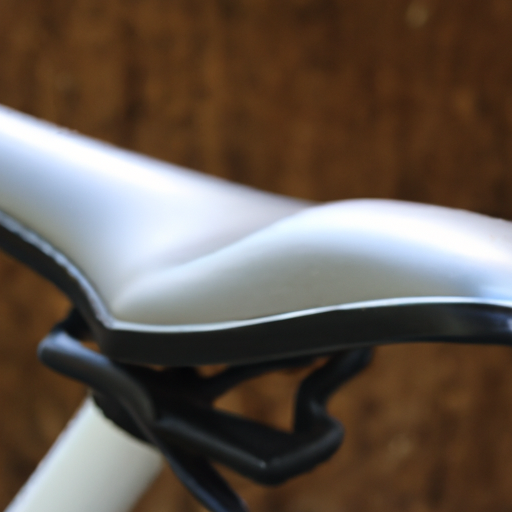How Do I Properly Size A Bike For My Height And Body Type?
So, you’ve decided to take up cycling and you’re excited to hit the road, but you’re not quite sure how to choose the right bike for your height and body type. Well, fear not! In this article, we’ll be discussing some helpful tips on how to properly size a bike to ensure the perfect fit for your comfort and enjoyment. Whether you’re a beginner or an experienced rider, finding the right bike size is essential for optimal performance and comfort. So let’s get started on finding your ideal ride!
Importance of Properly Sizing a Bike
Enhances Comfort and Reduces Fatigue
When it comes to cycling, proper bike sizing plays a crucial role in enhancing your comfort and reducing fatigue. Riding a bike that is too big or too small can lead to discomfort and strain on your body, leading to fatigue and ultimately impacting your overall enjoyment of the ride. By ensuring that your bike is the right size for you, you can optimize your riding experience, allowing for longer, more comfortable rides without unnecessary fatigue.
Improves Performance and Efficiency
Proper bike sizing is not only important for comfort but also for performance and efficiency. When you are riding a bike that fits you well, you are able to achieve a more efficient pedal stroke, maximizing your power output and speed. Additionally, a well-fitted bike allows for better control and handling, enhancing your overall performance on different terrains. By choosing the right bike size, you can experience improved performance and enjoy riding to your fullest potential.
Ensures Safety and Reduces Risk of Injury
Safety should always be a top priority when it comes to cycling. Riding a bike that is not properly sized for your body can pose significant risks and increase the chances of accidents and injuries. An ill-fitted bike may result in poor balance, compromised control, and difficulties in maneuvering the bike. By choosing the appropriate bike size, you can ensure a safer riding experience, reducing the risk of accidents and potential injuries.
Understanding Bike Frame Sizes
Different Frame Measurement Systems
Bike frame sizes are typically measured using different systems, depending on the country or brand. The most common measurement systems are based on inches or centimeters. It’s essential to understand the frame measurement system used by the manufacturer or seller, as this will determine how you select the correct frame size for your bike.
Choosing the Correct Frame Size
Choosing the correct frame size is crucial for a comfortable and efficient riding experience. To determine the appropriate frame size, you need to consider your inseam length, riding style, and body proportions. Each bike manufacturer may have slightly different sizing charts or guidelines, so it’s important to refer to their specific recommendations. By properly measuring your inseam length and taking into account other factors, you can select the right frame size that suits your unique body type and riding needs.
Choosing the Right Bike Type
Road Bikes
Road bikes are designed for paved surfaces and offer speed and efficiency. They feature lightweight frames, skinny tires, and a more aggressive riding position. If you enjoy long-distance rides, group rides, or participating in road races, a road bike may be the ideal choice for you.
Mountain Bikes
Mountain bikes are built for off-road trails and rugged terrains. They typically have suspension systems, wider and knobby tires, and a more upright riding position. If you enjoy exploring trails, tackling technical descents, or engaging in mountain biking adventures, a mountain bike is the way to go.
Hybrid Bikes
Hybrid bikes combine features of road bikes and mountain bikes, making them versatile and suitable for various terrains. They typically have a flat handlebar, a more relaxed riding position, and a wider tire profile. Hybrid bikes are a great choice for commuters, recreational riders, and those looking for a comfortable and versatile bike for leisurely rides.
City Bikes
City bikes, also known as urban or commuter bikes, are designed for navigating city streets and urban environments. They prioritize comfort and practicality, often featuring fenders, racks, and lights for commuting purposes. City bikes are perfect for commuting to work, running errands, and leisurely rides in the city.
Touring Bikes
Touring bikes are designed for long-distance cycling and multi-day adventures. They feature sturdy frames, wider tires for stability, and provisions for carrying heavy loads. If you enjoy bike touring, exploring new places, or embarking on cycling adventures, a touring bike will be your reliable companion.
Cyclocross Bikes
Cyclocross bikes are versatile machines that can handle a variety of terrain, including off-road trails and pavement. They typically have wider clearance for mud and debris, making them suitable for cyclocross racing or commuting in mixed conditions. If you are looking to participate in cyclocross events or want a bike capable of tackling different surfaces, a cyclocross bike may be the perfect choice for you.
BMX Bikes
BMX bikes are designed for freestyle riding, racing, and performing tricks. They have a compact frame, small wheels, and durable components. If you are into BMX style riding, skate park sessions, or adrenaline-filled tricks, a BMX bike is what you need to fulfill your riding desires.
Measuring Your Inseam Length
Importance of Inseam Length
Measuring your inseam length is a crucial step in determining the appropriate bike size. Your inseam length, which is the distance from your crotch to the floor, helps to ensure that the bike’s top tube height provides adequate clearance when standing over the bike. Proper clearance is essential for comfort and safety, especially when stopping or dismounting from your bike.
Measuring Inseam Length
To measure your inseam length accurately, follow these simple steps:
- Stand barefoot with your feet shoulder-width apart.
- Place a book or another flat object between your legs, as if straddling a bike.
- Measure from the top of the book to the floor, ensuring the measuring tape is straight and parallel to the ground.
- Repeat the measurement a few times to ensure accuracy.
Once you have your inseam length, you can use it as a reference when selecting the appropriate frame size for your height and body type.
Determining Bike Frame Size
Using Inseam Length for Frame Sizing
Your inseam length is a key factor in determining your bike’s frame size. It is often used as a starting point for selecting an appropriate frame size that provides optimal standover clearance. Standover clearance refers to the space between the top tube of the bike frame and your crotch when straddling the bike with your feet flat on the ground. Having adequate standover clearance ensures comfort and safety during stops and dismounts.
Calculating Frame Size with Standover Height
Standover height is another measurement that influences frame size selection. To calculate the standover height, subtract your inseam length from the total height of the bike frame. A frame size with a standover height that allows for a few inches of clearance is generally recommended for most riders. However, individual preferences and riding styles may vary, so it’s important to test ride different frame sizes to find the one that feels most comfortable and suits your needs.
Considering Top Tube Length
In addition to standover height, the top tube length is also essential in determining the correct frame size. The top tube, which runs horizontally from the bike’s head tube to the seat tube, affects your riding position and overall comfort. A longer top tube provides a more stretched-out and aerodynamic riding position, while a shorter top tube offers a more upright and comfortable riding position. It’s important to consider your flexibility, riding style, and personal comfort preferences when selecting the appropriate top tube length.
Adjusting Seat Height
Importance of Proper Seat Height
Adjusting your seat to the proper height is crucial for comfortable and efficient pedaling. When your seat is at the correct height, you can achieve a full leg extension at the bottom of each pedal stroke, optimizing power transfer and reducing the risk of knee pain or injury. Additionally, the correct seat height allows for proper leg alignment, preventing unnecessary strain on your muscles and joints.
Finding the Ideal Seat Height
To find the ideal seat height for your bike, follow these steps:
- Sit on your bike with your heels on the pedals.
- Rotate the pedals backward until one leg reaches its full extension.
- The seat height is correct when your leg is fully extended with a slight bend in your knee.
Adjust the seat height accordingly by raising or lowering the seat post until you find the position that allows for optimal leg extension and comfort during your rides.
Choosing the Right Handlebar Width
Effects of Handlebar Width
The width of your handlebars can significantly impact your comfort, control, and overall riding experience. Choosing the right handlebar width is important for maintaining proper body alignment, avoiding discomfort and fatigue, and achieving optimal control over your bike. Handlebars that are too wide or too narrow can lead to shoulder and wrist pain, reduced control, and compromised riding performance.
Measuring Handlebar Width
To measure your handlebar width, follow these steps:
- Sit on your bike in your natural riding position, with your hands resting on the handlebars.
- Measure the distance between the center of each hand where they rest on the handlebars.
- Take note of the measurement and use it as a reference when selecting the appropriate handlebar width.
Remember that handlebar width is a personal preference, and what works for others may not work for you. It’s important to test different handlebar widths and choose the one that feels most comfortable and stable during your rides.
Factors to Consider in Handlebar Width Selection
When deciding on the right handlebar width for your bike, consider the following factors:
- Shoulder Width: Your handlebar width should align with your shoulder width, allowing for a natural and comfortable riding position.
- Riding Style: Different riding styles may benefit from varying handlebar widths. For example, wider handlebars offer more stability and control for off-road riding, while narrower handlebars provide better aerodynamics for road cycling.
- Personal Preference: Ultimately, the handlebar width that feels the most comfortable and allows for confident control should be your primary consideration.
Finding the Appropriate Stem Length
Significance of Stem Length
The stem length on your bike determines the reach and comfort of your riding position. Stem length refers to the distance from the center of the handlebar clamp to the center of the steerer tube. Choosing the appropriate stem length is crucial for achieving a balanced riding position, proper weight distribution, and comfortable control over your bike.
Determining the Correct Stem Length
To determine the correct stem length for your bike, consider the following factors:
- Riding Style: Your preferred riding style influences the appropriate stem length. For example, a shorter stem is often preferred for more agile handling in off-road or mountain biking, while a longer stem can provide a more stable and comfortable position for road cycling or touring.
- Body Proportions: Each individual’s body proportions are unique, and the stem length should correspond to their arm length, leg length, and torso length. Experimenting with different stem lengths can help you find the one that feels most comfortable and allows for an optimal riding position.
It’s important to note that adjusting the stem length affects your bike’s handling characteristics. It’s recommended to seek professional advice or consult experienced riders to determine the ideal stem length for your specific riding style and body type.
Considering Frame Geometry
Understanding Frame Geometry
Frame geometry refers to the overall shape and angles of a bike frame. Different frame geometries are designed to suit various riding styles, body types, and preferences. Understanding frame geometry is essential for selecting a bike that offers the right balance of stability, agility, comfort, and performance.
Matching Frame Geometry to Riding Style and Body Type
When considering frame geometry, take into account your preferred riding style and body type. For example:
- Endurance or relaxed geometry frames are suitable for long-distance riding, as they offer a more upright riding position and increased comfort.
- Aggressive or race-oriented frames are designed for speed and aerodynamics, with a more stretched-out riding position.
- Compact or sloping top tube frames provide increased standover clearance and are suitable for riders with shorter inseams or those who prioritize maneuverability.
Consider your riding goals, flexibility, and body proportions when selecting a bike with the appropriate frame geometry. Personal preferences and individual comfort should play a significant role in your decision-making process.
Importance of Professional Bike Fitting
Benefits of Professional Bike Fitting
While the guidelines and measurements provided in this article can be helpful, nothing beats the expertise and knowledge of a professional bike fitter. Professional bike fitting involves analyzing your body proportions, flexibility, riding style, and goals to ensure the best possible bike fit. Benefits of professional bike fitting include:
- Optimal Performance: A professional bike fit can help you maximize your power output, efficiency, and speed.
- Injury Prevention: Correct positioning and adjustments can minimize the risk of overuse injuries, discomfort, and muscle imbalances.
- Comfort: A professionally fitted bike ensures greater comfort over long rides, reducing fatigue and enhancing enjoyment.
Seeking Expert Advice for Optimal Bike Size
If you are unsure about properly sizing a bike for your height and body type, it is highly recommended to seek expert advice from a professional bike fitter or local bike shop. These professionals can provide personalized recommendations based on your unique needs, taking into account factors such as flexibility, riding style, and body proportions. By consulting with experts, you can ensure that you select the perfect bike size that fits you like a glove, enhancing your cycling experience to its fullest potential.
In conclusion, properly sizing a bike is crucial for comfort, performance, safety, and overall enjoyment. By understanding bike frame sizes, choosing the right bike type, measuring your inseam length, determining the bike frame size, adjusting the seat height, selecting the right handlebar width and stem length, considering frame geometry, and seeking professional bike fitting when needed, you can find the ideal bike size that suits your height, body type, and riding goals. Remember, a properly sized bike will enhance your experience and help you make the most out of every pedal stroke. Happy cycling!


